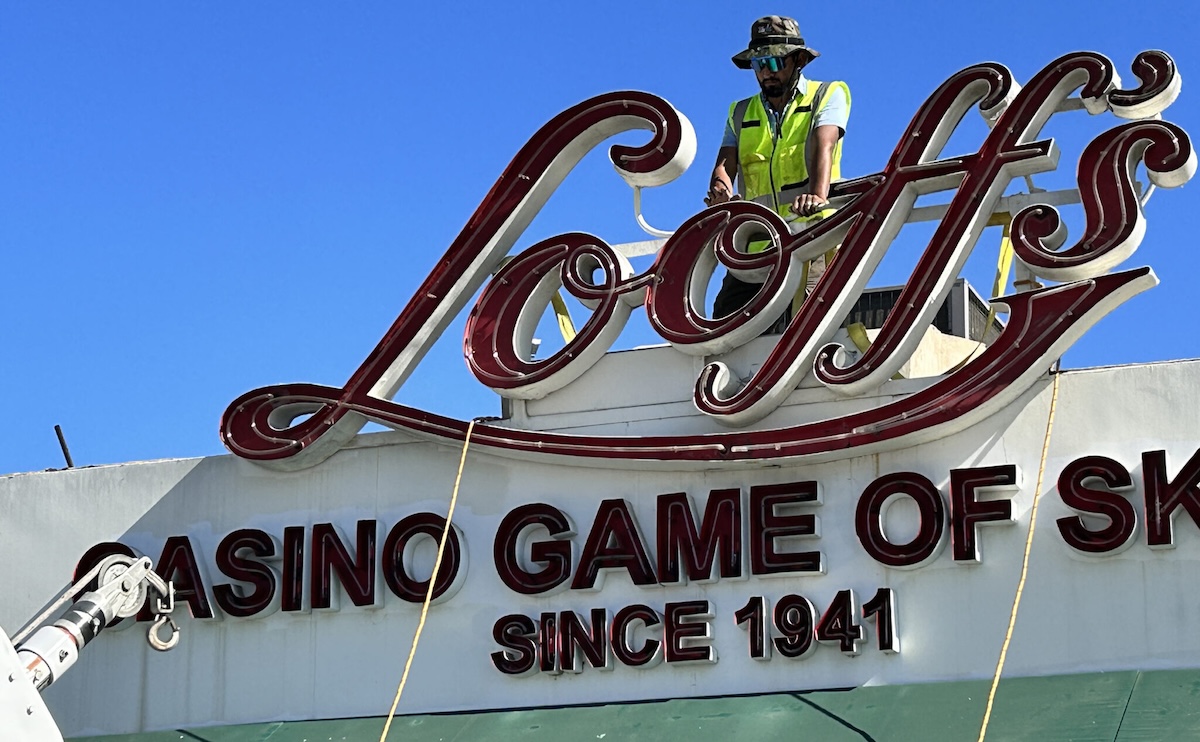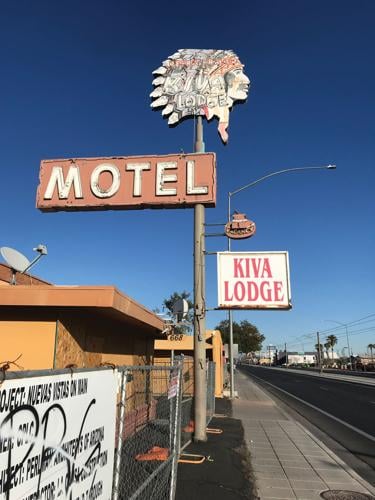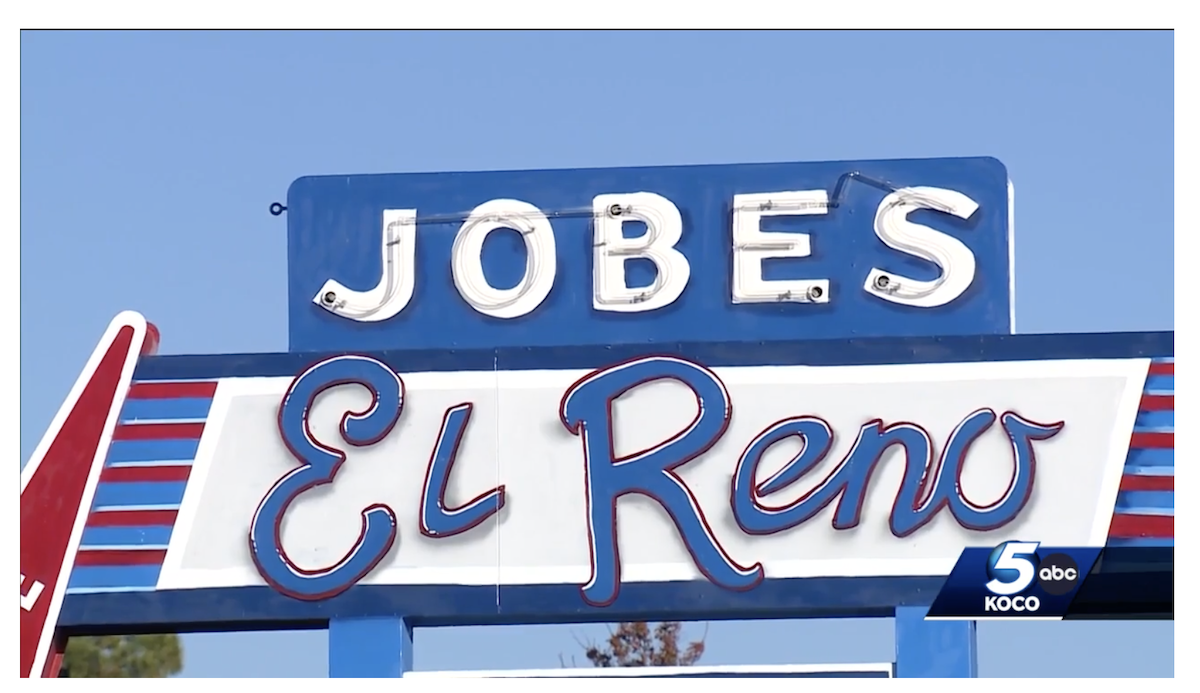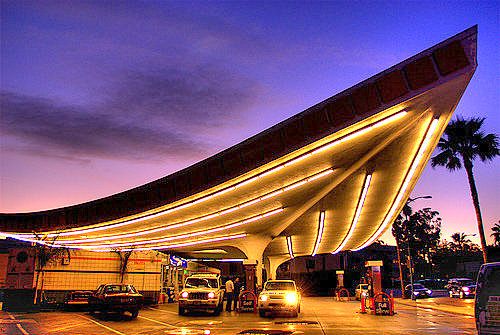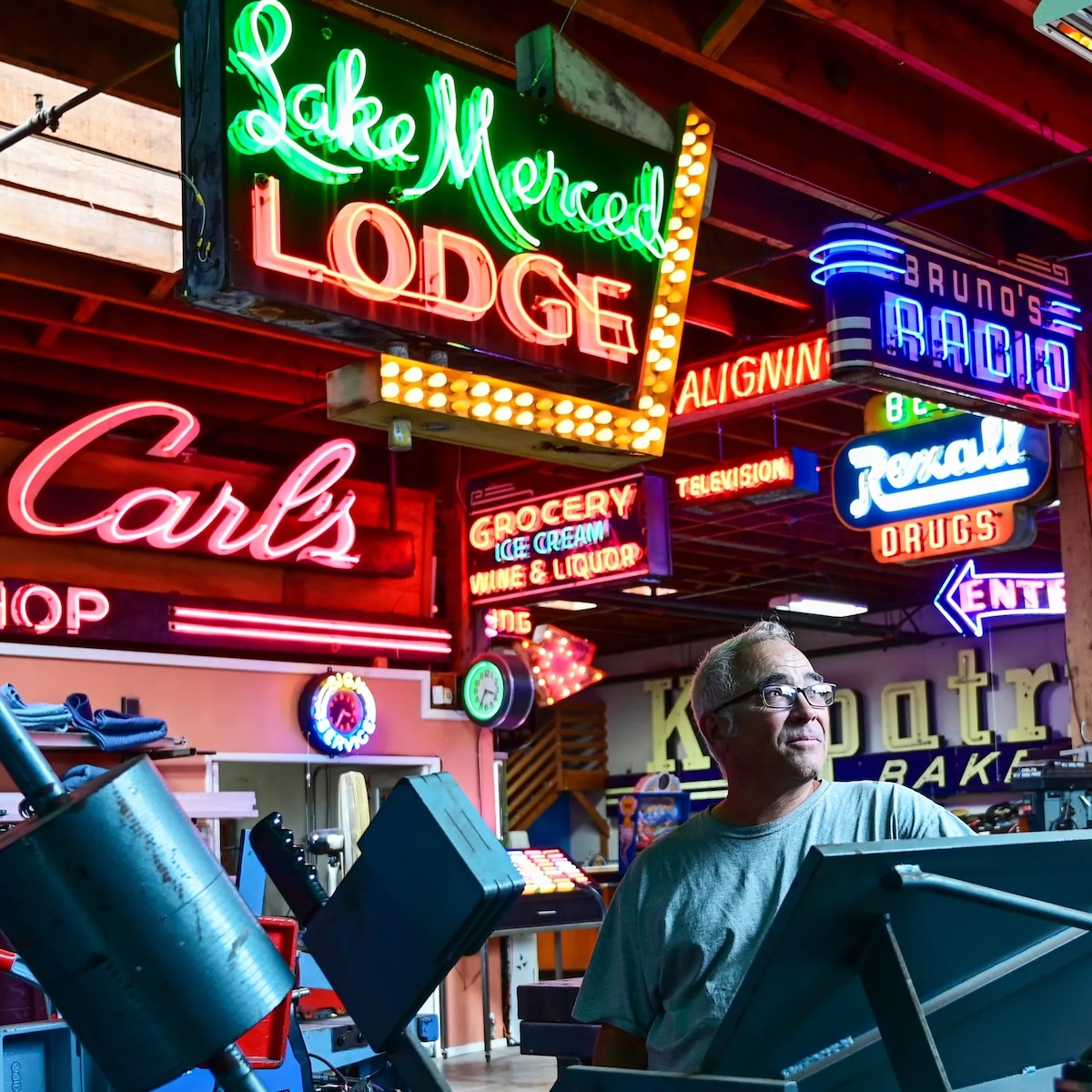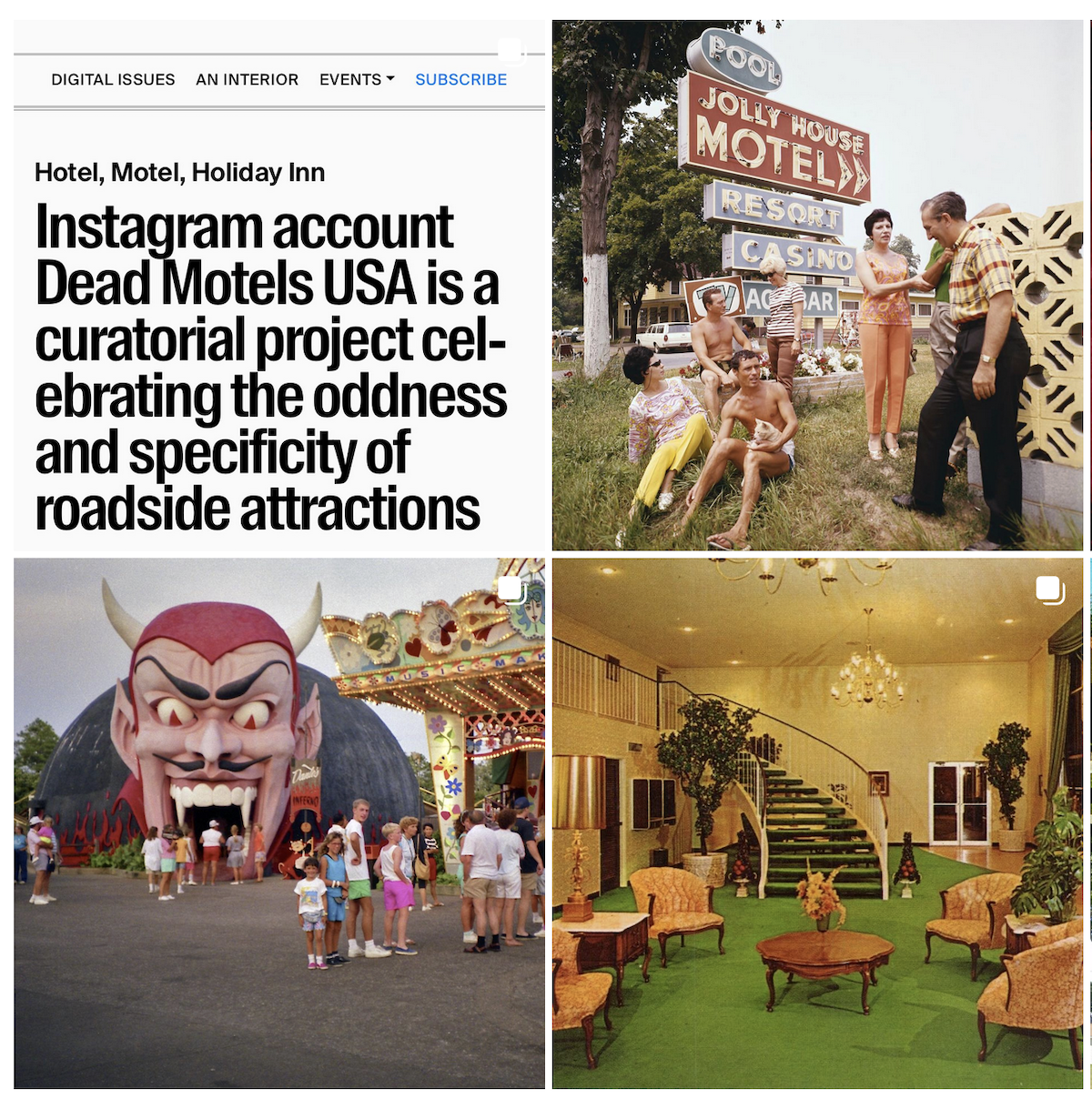A last vestige of the historic Pike has left Long Beach, but the Looff’s Lite-A-Line sign will live on
A crew removes the Looff’s neon sign. Courtesy of the Museum of Neon Art.
From the Long Beach Business Journal: Growing up in the early 1970s, Samantha Spearman fondly remembers her dad taking her to The Pike amusement zone in Downtown Long Beach. He would walk her up to one of the various carnival attractions, where she would throw balls or rings. And she always won big.
“Now I realize when he shook the guy’s hand, he probably slipped him 20 bucks,” Spearman said with a laugh.
Decades later, Spearman finds herself intertwined with the legacy of The Pike, which she’s recently taken steps to preserve, along with her father’s love of history.
Nonprofit levels historic 90-year-old motel
The Kiva Lodge for nine decades offered respite to weary travelers in Mesa, Arizona. File photo
From The Mesa Tribune: A Main Street motel that served weary travelers to Mesa for almost 90 years was torn down in October after owner Chicanos Por La Causa got a demolition permit from the city.
The property did not have a local historic designation that would have paused the Kiva Lodge’s demolition, so the city had no discretion once the nonprofit had submitted all the necessary documents.
But the demolition took some preservationists by surprise.
Man looks to restore landmark with plans to reopen historic Route 66 diner
From KOCO: EL RENO, Okla. — A man aims to restore a landmark as he has high hopes for a diner along historic Route 66 in El Reno.
“It’s special to El Reno, and it’s special to Oklahoma,” said Eric Hughes, the owner of Jobes Drive-In.
The familiar diner along Route 66 in El Reno has been closed for seven years, but it’s known as a historic landmark. While you can’t order off the 50-year-old menu, Jobes Diner is cooking up a new recipe.
America’s Grandest Gas Stations
Ibolya/CC BY 2.0
From Atlas Obscura: The start of the holiday season also marks the start of a travel tour de force. The season filled with family, friends, and hearty meals is also often filled with miles and miles of travel. While some will brave TSA lines and potential lost luggage, millions of Americans will be hitting the road to reach their holiday destinations. Inevitably, this comes with a stop at a gas station or two. Most are routine stopovers with little to see more than cheap snacks and lottery tickets, others are marvels of architecture and history that add wonder to the journey.
When travelers pull into this tiny gas station in Cloquet, Minnesotawith a lookout tower, they are stopping at a piece created by an architectural legend. The Frank Lloyd Wright Gas Station was originally designed as a home for a Cloquet resident, who happened to be in the petroleum business. Across the country in the deserts of Hanksville, Utah, a stop at the Hallow Mountain gas stations means walking into a rockface. The convenience store that services the stations was built directly into the rocky Utah terrain, offering an escape from the heat.
From a gas station inspired by a political scandal to an Art Deco delight, here are 13 gas stations that offer a welcome reprieve from the open road.
This Workshop Keeps San Francisco’s Neon Signs Glowing
Jim Rizzo, owner of Neon Works, stands in the middle of his workshop in Oakland. Source: Samantha Laurey for The Standard
From The San Francisco Standard: From the Buddha Lounge to the House of Shields, Tommy’s Joynt to Bimbo’s 365 Club, neon light bathes San Francisco in a cinematic glow. It’s no coincidence that movie palace “blades”—those vintage vertical signs that announce the Castro Theatre, the 4-Star or the Alamo Drafthouse—are each built from neon, too.
Fundamentally simple signs declare a place’s purpose—a liquor store, an old-school hotel, even a humble shoe repair shop or check-cashing place. But the city is replete with more elaborate examples: the blinking martini glass of the Mission District dive the 500 Club, the three-dimensional lantern illuminating Chinatown’s Li Po Lounge and the sprawling expanse of “Hills Bros. Coffee” over the Embarcadero.
Instagram account Dead Motels USA is a curatorial project celebrating the oddness and specificity of roadside attractions
From The Architect’s Newspaper: In October 2018, critic and journalist Kate Wagner published an article in The Baffler about online communities of hobbyist preservationists. They were collecting imagery of decaying and decommissioned buildings and posting their investigations on image-based social media sites, gaining huge followings. The phenomenon as described by Wagner constitutes a shadow populist historic preservation movement that rivals “the two most substantial national surveys of written, photographic, and architectural documentation of American vernacular architecture, combined,” meaning the Library of Congress’s Historic American Building Survey (HABS) and Historic American Landscapes Survey (HALS).
Instagram has its own brand of hobbyist preservationists. Rather than collective image gathering that defines sites like Flickr and Facebook, Instagram’s profiles and timeline structure require users to curate their desired experience for both sharing and consuming images. As such, Instagram’s sharing experience is more focused, encouraging popular profiles to dedicate themselves to a distinct subject. One such Instagram profile, focused on archiving a specific architectural type is Dead Motels USA, which documents motels—short for “Motor Hotel.”



